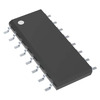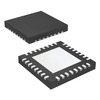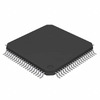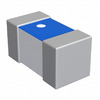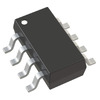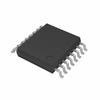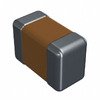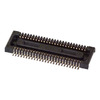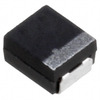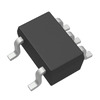Comprehensive guide to hFE in transistors
Transistors are crucial components in modern electronic devices, enabling signal amplification and control. This article delves into the knowledge surrounding hFE, including how to select a transistor's hFE value, how to find hFE, and the gain of different types of transistors. Through our exploration of hFE, we gain a deeper understanding of how transistors work and their role in electronic circuits.
Catalog
What is hFE in a Transistor?
How to Calculate a Transistor's hFE?
The Importance of hFE in Transistors
How to Find a Transistor's hFE?
Different Types of Transistor Gain
What is the hFE Value of a Transistor?
Specifications of hfe
Different States of Current Gain
Factors Affecting hfe
hfe and Beta β
Conclusion
Transistors are crucial in modern electronic devices, enabling signal amplification and control. This article delves into the knowledge surrounding hFE, including how to select a transistor's hFE value, how to find hFE and the gain of different types of transistors. Through our exploration of hFE, we gain a deeper understanding of how transistors work and their role in electronic circuits.
What is hFE in a Transistor?
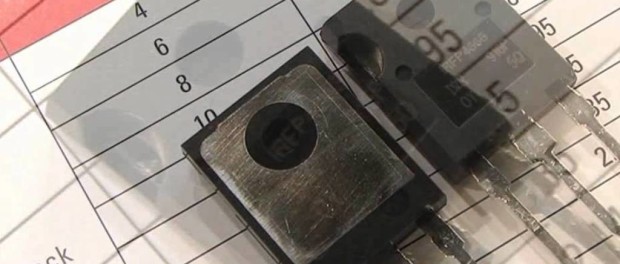
In a common-emitter configuration, the forward current gain of a Bipolar Junction Transistor (BJT) is known as hFE. This dimensionless index measures a transistor's ability to amplify current.
More specifically, he is the ratio of the transistor's collector current to its base current. For example, if a transistor's hFE value is 100, this means that for every 1mA increase in base current, the collector current will increase by 100mA.
This characteristic makes hFE a key parameter in designing BJT circuits. However, it is important to note that even transistors of the same model can have significant variations in their hFE values. Therefore, circuit designs should not rely solely on precise hFE values for correct operation.
How to Calculate a Transistor's hFE?
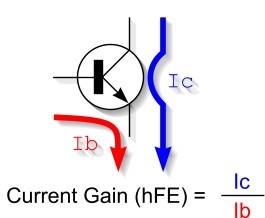
To understand the DC gain, also known as beta (β) or hFE, of a Bipolar Junction Transistor (BJT), we delve into its measurement method. hFE is the ratio of the DC collector current (Ic) to the DC base current (Ib), expressed by the simple formula hFE = Ic/Ib.
Typically, you would follow these steps:
1. Prepare the Circuit
Before starting, you must build a circuit that can precisely control the current flowing to the base and simultaneously measure the current flowing out of the collector. This usually involves connecting a known resistor to the base and applying a precise voltage. This step is fundamental to the experiment, requiring meticulous operation to ensure the accuracy of subsequent measurements.
2. Measure Base Current (Ib)
The base current is calculated by measuring the voltage drop across the resistor connected to the base. Using Ohm's law (V = IR), we can calculate the current flowing through the base with the known resistor value and voltage drop. This process demands precise voltage measurements, as any error could affect the final current gain measurement.
3. Measure Collector Current (Ic)
Similar to measuring the base current, measuring the collector current involves measuring the voltage drop across a known resistor placed in the collector's path. Applying Ohm's law again, we can determine the amount of current flowing through the collector. This step requires the same level of attention and precision as the previous one.
4. Calculate the hFE Value
With the measured values of the base current and collector current, dividing the collector current by the base current yields the hFE value. This ratio demonstrates the transistor's ability to amplify current under DC conditions.
Considerations
It's important to note that he is not a fixed value. It can vary depending on the specific transistor used, changes in environmental temperature, and fluctuations in collector current. Therefore, in circuit design, it's crucial not to rely too heavily on a fixed hFE value to avoid unstable circuit operation.
The Importance of hFE in Transistors
The DC gain of Bipolar Junction Transistors (BJT) is a critical metric for measuring their ability to amplify current, essential for electronic circuit design and application. Here are some aspects of the importance of hFE values:
Amplification: The hFE value directly impacts the transistor's amplification capability. In many circuit designs, transistors are used to amplify weak signals, with the magnitude of hFE determining the degree of amplification: the higher the hFE value, the more pronounced the amplification of the input current.
Biasing: When biasing a transistor, i.e., setting its operational state, the hFE value is used to calculate the base current needed to achieve a specific collector current, which is crucial for stable circuit operation.
Circuit Design: In the circuit design process, especially in configurations involving common-emitter amplifiers, the amplifier's gain is proportional to the hFE value, making an understanding of hFE indispensable for designing efficient circuits.
Switching Applications: In digital circuits and other applications where transistors are used as switches, the hFE value ensures that the transistor can effectively turn on or off given a certain base current, which is decisive for the circuit's reliability.
However, due to variations in the manufacturing process, even transistors of the same model can have different hFE values, and these values can change with temperature and operating conditions. Therefore, engineers typically do not rely on a fixed hFE value to ensure correct circuit operation. Instead, they ensure that the circuit can operate stably across the expected range of hFE values, a method that helps achieve more robust and reliable circuit designs.
How to Find a Transistor's hFE?
Typically, the hFE value of a specific transistor can be found in the manufacturer's transistor datasheet, which details the technical parameters of the transistor. This includes the maximum power the transistor can withstand, its current capacity, maximum voltage, and the hFE value of interest.
However, it's worth noting that the hFE value in datasheets is usually given as a possible range rather than a precise number. The reason behind this is that minor differences in the manufacturing process mean that even transistors of the same model can have different hFE values. Additionally, the hFE value of transistors can vary under different operating conditions (such as changes in temperature or variations in collector current).
If you need to know the exact hFE value of a specific transistor under specific conditions, you will need to measure it yourself. This process involves applying a known current to the transistor's base and then measuring the resultant collector current. Based on these two values, you can calculate the hFE value. To simplify this process, there are specialized instruments sold for measuring transistor hFE.
While the hFE value is a valuable reference, relying on a specific hFE value is not a good strategy when designing circuits. The actual hFE value of a transistor can fluctuate significantly, so circuit designs should ensure that the circuit can operate stably within the expected range of hFE values, rather than fixing on a specific value. This approach helps create more robust and reliable electronic designs.
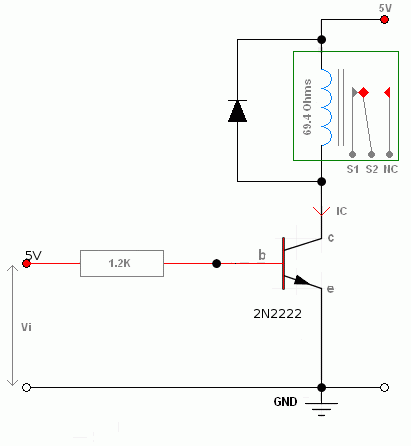
Different Types of Transistor Gain
In electronics, we often talk about "gain," which is a standard for measuring the difference between output and input. For transistors, this difference manifests in several forms of gain, depending on the specific configuration and parameters of the transistor.
Two Forms of Current Gain
Beta (β) or hFE:
When we talk about the beta (β) or hFE of a Bipolar Junction Transistor (BJT), we refer to the current gain in a common-emitter configuration. Imagine measuring the DC flowing through the transistor's collector (Ic) and comparing it to the DC entering the base (Ib). The β value is the result of this ratio, directly affecting how the transistor enhances the current. NPN transistors use β, while PNP transistors use β'.
he:
Similar to hFE, hFE focuses on small-signal current gain but this time under AC conditions, i.e., under conditions of constantly changing currents and voltages. It's usually measured at a specific frequency, showing how the transistor handles rapidly changing signals.
Other Important Types of Gain
Alpha (α):
Alpha gain is observed in a common-base configuration, comparing the DC collector current (Ic) to the DC emitter current (Ie). Most transistors have an α value very close to 1, meaning the current almost entirely transfers from the emitter to the collector.
Voltage Gain (Av):
Next, voltage gain (Av) focuses on the ratio of the output voltage to the input voltage. Understanding voltage gain is key when analyzing the performance of amplifier circuits, as it tells us how many times the amplifier can increase the input signal.
Power Gain (Ap):
Finally, power gain (AP) is extremely important in power applications, measuring the ratio of output power to input power. This parameter is particularly applicable for assessing the performance of circuits like power amplifiers.
What is the hFE Value of a Transistor?
The hFE value of a transistor, also known as β, is a key indicator of its capability as an amplifier. Simply put, it tells us how many times the transistor can amplify the base current (IB) to form a larger collector current (IC). This process can be described by a simple equation: IC = hFE * IB= β * IB.
Imagine, if you input 1mA (milliampere) of current into the base of a transistor, and the transistor's hFE value is 100, theoretically, the collector current would increase to 100mA (milliampere). This increase not only reflects the transistor's role as a current amplifier but also shows how it can transform minor changes into significant outputs.
Although we typically consider the hFE value of a transistor to be within a certain fixed range, such as 10 to 500, in reality, this value is affected by factors such as changes in temperature and voltage fluctuations. Therefore, even for transistors of the same model, hFE values can differ.
The most direct method to determine a specific transistor's hFE value is to consult the manufacturer's datasheet. However, datasheets typically provide a range for the hFE value rather than a specific number. This reflects the fact that, despite the precision of manufacturing techniques, ensuring identical hFE values for every transistor is challenging. Thus, manufacturers provide a range of possible hFE values.
Given the inherent variability of hFE, designing a stable and predictable transistor circuit becomes crucial. This means that designers need to account for possible fluctuations in hFE, ensuring the circuit can maintain stable performance even when hFE values change. This design strategy helps overcome the unpredictability of transistor performance, ensuring the reliable operation of circuits.
Specifications of the
- - Definition: Common-emitter amplification factor, representing the ratio of transistor collector current to base current (hFE = IC/IB)
- - Typical Range: Applies to 10 to 500 times, with most values at 100
- - Variability: There can be significant differences between transistors of the same type
- - Temperature Stability: Affected by temperature, hFE decreases with rising temperature
- - Current Stability: Allows collector current to vary without increasing significantly with collector current
- - Gain Error: For bipolar transistor gain, deviations and offsets are important for device performance
- - Environmental Stability: Used for a large number of transistors, where transistor hFE can have a significant effect
- - Natural Attenuation: In small current amplitudes, natural attenuation leads to a decrease in hFE value to ensure consistent performance
- - Usage in Circuits: Widely used in circuit design, for example, to determine stable electric in transistor collector-base circuits
Different States of Current Gain
As we delve deeper into how transistors handle current, we're analyzing their performance across different operating regions. Each region represents a specific mode of use for the transistor, and in these modes, the current gain—the transistor's ability to amplify—varies. Let's take a closer look at these working regions:
1. Active Region (Linear Region)
This is where the magic of the transistor as an amplifier happens. In this region, the transistor's base and emitter exhibit forward bias—imagine a door slightly opened, allowing current to pass through. Meanwhile, the base and collector are reverse-biased, akin to another door firmly closed, preventing current from flowing in the wrong direction. In this setup, current can flow from the collector to the emitter, with the current gain (hFE or β) playing a crucial role here, determining the degree of signal amplification.
2. Saturation Region
The saturation region is the state where the transistor is fully operational, with both the base-to-emitter and base-to-collector connections being forward-biased. Imagine it as a fully open water gate, allowing water (current) to flow freely. However, once the current reaches its limit, even if the base current continues to increase, the flowing current will not increase further. This is the so-called saturation state—the transistor acts like a closed switch that cannot open further.
3. Cut-off Region
Lastly, the cut-off region is the mode where the transistor is turned off, preventing any current from passing through. Here, both the base-to-emitter and base-to-collector connections are reverse-biased, like two doors firmly shut, stopping any current flow. In this state, since the base current is zero, the collector current naturally is also zero, making the current gain theoretically zero.

Factors Affecting the
How Temperature Affects hFE
When operating a transistor, you'll find that hFE, or its current gain/amplification factor, changes with the surrounding environmental temperature. Generally, as the temperature rises, he tends to decrease. This means that when using transistors in environments with significant temperature fluctuations, special attention is needed. The temperature rise can lead to reduced performance and stability of the transistor, affecting your circuit design and final application.
The Impact of Collector Current Variation on hFE
In practice, a transistor's hFE is not a fixed value. It gradually decreases as the collector current (IC) increases. This means that understanding the variability of hFE is crucial in circuit designs where collector current may vary. It directly relates to the overall performance of the circuit, which could be affected by changes in hFE.
Aging, Degradation, and Their Effects on hFE
Over time, aging and degradation effects in the use of transistors can lead to changes in hFE. These changes can be caused by a variety of factors, including long-term use, adverse environmental conditions, or electrical stress. In applications where performance stability is stringently required, considering the long-term stability of transistor hFE over time becomes particularly important. Ensuring the stability of hFE is key to maintaining continuous normal operation of the circuit.
he and Beta β
In the representation of transistor current gain, multiple symbols are used, each reflecting a different aspect of current gain:
Beta (β): Beta (β) is the conventional symbol for the forward current gain of a transistor, primarily introduced during the electronic circuit design phase.
he: he is a specific notation used to describe the transistor current gain in a common-emitter configuration, where "h" refers to the parameter's small-signal state, "f" represents forward transmission characteristics, and "e" stands for common emitter configuration. he is essentially equivalent to the small-signal Beta value and is commonly seen in transistor datasheets and circuit design calculations.
While hFE, he, and Beta are all widely used abbreviations, he, and here are more commonly seen in technical documents. However, due to the significant differences in current gain between different transistors, these notations often have more theoretical significance. Therefore, for the design of any transistor circuit, whether for small-signal applications or DC applications, adapting to the significant variability of current gain is important.
|
hallmark |
hFE
(ac gain exponent) |
Beta
(DC gain index) |
|
define |
Ratio
of collector current (Ic) to base current (Ib) |
Gain
static is greater than zero, reflecting the ratio between Ib and Ic. |
|
Other
names |
Residual
current gain, βF |
/ |
|
usage |
Commonly
used in common emitter mode |
/ |
|
realm |
Applicable
between 10 and 500 |
/ |
|
symbolize |
β |
hFE
(commonly used in place of β in BJT data sheets) |
|
sensitivities |
May
vary depending on operating conditions |
May
vary depending on operating conditions |
|
representation |
AC
current index |
DC
Current Gain |
|
significance |
Special
requirements for materials of an environmentally friendly nature |
/ |
Although he and Beta are related measures of transistor current gain, they differ in representation (AC vs. DC), usage, and naming conventions. Understanding these differences is crucial for effectively designing and analyzing transistor circuits.
Conclusion
This article provides an in-depth look at the current gain (hFE) of bipolar junction transistors (BJTs), a key metric used to measure a transistor's ability to amplify current. hFE is a measure of the ratio of base and collector currents and is critical to the design of circuits incorporating BJTs. While the hFE value of a transistor can be obtained from the manufacturer's datasheet, it is important to note that in practice, the hFE value is subject to production process variations, temperature variations, and current fluctuations, and can vary significantly. Instead of relying solely on a fixed hFE value, circuit designers should consider the range of possible variations in hFE to ensure circuit stability and reliability. In addition, the article discusses current gain states in different operating regions, factors affecting hFE, and the differences between hFE and other current gain parameters such as hFE and Beta, providing a comprehensive understanding of how transistors handle current and amplify signals.
Frequently Asked Questions
1.What is the current gain of a transistor?
The ratio of the collector current to the base current is called the current gain symbolized as βdc or hFE, For low-power transistors, this is typically 100 to 300.
2.How do you test whether the transistor is bad or good?
Connect the negative probe of the multimeter to the base output (usually a black probe), and the positive (red) first to the collector and then to the emitter. Obtaining a value in the range of~500 -1500 Ohm confirms the correct operation of the transistor.
3.How do you measure a transistor with a multimeter?
Connect the negative probe of the multimeter to the base output (usually a black probe), and the positive (red) first to the collector and then to the emitter. Obtaining a value in the range of~500 -1500 Ohm confirms the correct operation of the transistor.
About us
ALLELCO LIMITED
Read more
Quick inquiry
Please send an inquiry, we will respond immediately.
→ Previous
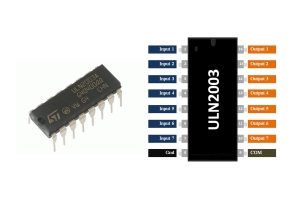
The ULN2003 series, known for integrating high voltage and high current capabilities in a Darlington transistor array, stands out for its advantageous working voltage, superior performance in current amplification, wide temperature adaptability, and load-bearing capacity. This makes it an ideal choi...
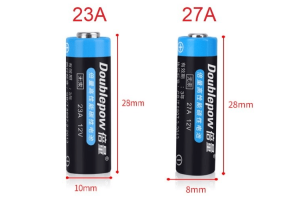
The 27A battery, also known as A27 or MN27, fits into a variety of electronic devices with ease. This battery packs a punch with its dimensions and the intricate makeup of its guts: a lineup of eight LR732 alkaline cells strung together in a neat row, pumping out a steady 12.0 volts. Its power stora...
→ Next

ULN2003 Comprehensive Guide - Features, Operating Principles, Equivalents and Applications
on April 10th

27A Battery VS 23A Battery: Different Sizes, Same Energy
on April 8th
Popular Posts
-

What is GND in the circuit?
on January 1th 3168
-

RJ-45 Connector Guide: RJ-45 Connector Color Codes, Wiring Schemes, R-J45 Applications, RJ-45 Datasheets
on January 1th 2739
-

Understanding Power Supply Voltages in Electronics VCC, VDD, VEE, VSS, and GND
on November 17th 2360
-

Fiber Connector Types: SC Vs LC And LC Vs MTP
on January 1th 2214
-

Comparison Between DB9 and RS232
on January 1th 1834
-

What Is An LR44 Battery?
Electricity, that ubiquitous force, quietly permeates every aspect of our daily lives, from trivial gadgets to life-threatening medical equipment, it plays a silent role. However, truly grasping this energy, especially how to store and efficiently output it, is no easy task. It is against this background that this article will focus on a type of coin cell battery that may seem insignificant on the...on January 1th 1806
-

Understanding the Fundamentals:Inductance Resistance, andCapacitance
In the intricate dance of electrical engineering, a trio of fundamental elements takes center stage: inductance, resistance, and capacitance. Each bears unique traits that dictate the dynamic rhythms of electronic circuits. Here, we embark on a journey to decipher the complexities of these components, to uncover their distinct roles and practical uses within the vast electrical orchestra. Inductan...on January 1th 1759
-

CR2430 Battery Comprehensive Guide: Specifications, Applications and Comparison to CR2032 Batteries
What is CR2430 battery ?Benefits of CR2430 BatteriesNormCR2430 Battery ApplicationsCR2430 EquivalentCR2430 VS CR2032Battery CR2430 SizeWhat to look for when buying the CR2430 and equivalentsData Sheet PDFFrequently Asked Questions Batteries are the heart of small electronic devices. Among the many types available, coin cells play a crucial role, commonly found in calculators, remote controls, and ...on January 1th 1725
-

What Is RF and Why Do We Use It?
Radio Frequency (RF) technology is a key part of modern wireless communication, enabling data transmission over long distances without physical connections. This article delves into the basics of RF, explaining how electromagnetic radiation (EMR) makes RF communication possible. We will explore the principles of EMR, the creation and control of RF signals, and their wide-ranging uses. The article ...on January 1th 1714
-

Comprehensive guide to hFE in transistors
Transistors are crucial components in modern electronic devices, enabling signal amplification and control. This article delves into the knowledge surrounding hFE, including how to select a transistor's hFE value, how to find hFE, and the gain of different types of transistors. Through our exploration of hFE, we gain a deeper understanding of how transistors work and their role in electronic circu...on November 17th 1684
